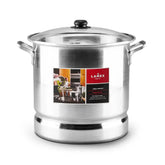3 delicias culinarias para disfrutar este Día de Muertos
por
David Zamorano
31 Oct 2018
Como es tradición en nuestro país, en esta época nos reunimos para honrar la memoria de nuestros seres queridos que ya partieron de este plano. Y, como es tradición también, la comida juega un papel esencial en esta celebración tan nuestra.
Aquí te compartimos tres riquísimos platillos típicos de esta época, que puedes preparar o disfrutar para apapachar el alma.
1. Pan de muerto

Simplemente indispensable en estas fechas tanto para tu ofrenda como para tu mesa. Las panaderías comienzan a producirlo en las primeras semanas de octubre, y desde entonces ya lo puedes disfrutar con un riquísimo chocolate caliente. Hay muchas variedades, pero las dos principales son el pan que viene espolvoreado con azúcar y el de ajonjolí. Ambos son deliciosos.
Si te quieres aventurar, también puedes hornearlo en casa. Las abuelitas, expertas en este tipo de comida, recomiendan usar ralladura de naranja, té de anís o té de azahar para su preparación.
Además de ser una delicia, el pan de muerto tiene un profundo significado ligado a la tradición. Hay muchas interpretaciones para las líneas cruzadas que decoran el pan: los puntos cardinales, las cuatro deidades aztecas e incluso muchos aseguran que representan los huesos de los difuntos, y la bolita que corona el pan; el corazón o el cráneo.
2. Calabaza en Tacha

Este postre suele incluirse también en la ofrenda, generalmente en platos de barro. Aunque tradicionalmente se hace con calabaza de castilla, hay quienes lo preparan también con la calabaza anaranjada, que a veces recibe el nombre de "pumpkin".
Además de la calabaza, este platillo se prepara con piloncillo, canela y guayaba. Se cocina la calabaza con todo y cáscara y se sirve igualmente. Puedes conseguirlo en cualquier mercado local, seguramente te va a encantar.
3. Alfeñique
 Cerca del Día de Muertos puedes ver en la calle, en los mercados y prácticamente en todos lados, estas figuritas de cráneos decorados con dulce de color. En algunas ocasiones los artesanos que los fabrican escriben nombres de personas en la frente del pequeño cráneo que puede ser de azúcar, de chocolate o incluso de amaranto y semillas.
Cerca del Día de Muertos puedes ver en la calle, en los mercados y prácticamente en todos lados, estas figuritas de cráneos decorados con dulce de color. En algunas ocasiones los artesanos que los fabrican escriben nombres de personas en la frente del pequeño cráneo que puede ser de azúcar, de chocolate o incluso de amaranto y semillas.
Existe el alfeñique duro y blando por lo que su elaboración es algo meramente artístico y tradicional; se requiere azúcar glass, agua caliente, limón y grenetina para formar una pasta, las manos mexicanas necesitan moldes para crear figurillas como las calaveritas antes mencionadas, ataúdes con su difuntito adentro, animalitos, angelitos y frutas de las que luego aplican la creatividad para pintarlas y decorarlas. En distintos estados les agregan otros ingredientes como chocolate, almendra, miel y pastas.
No pueden faltar en la ofrenda y además es tradición regalarle una calaverita a tus amigos y familiares.
¿Qué platillo consideras típico de esta época? ¡Cuéntanos!
Con información de: fuente
Aquí te compartimos tres riquísimos platillos típicos de esta época, que puedes preparar o disfrutar para apapachar el alma.
1. Pan de muerto

Simplemente indispensable en estas fechas tanto para tu ofrenda como para tu mesa. Las panaderías comienzan a producirlo en las primeras semanas de octubre, y desde entonces ya lo puedes disfrutar con un riquísimo chocolate caliente. Hay muchas variedades, pero las dos principales son el pan que viene espolvoreado con azúcar y el de ajonjolí. Ambos son deliciosos.
Si te quieres aventurar, también puedes hornearlo en casa. Las abuelitas, expertas en este tipo de comida, recomiendan usar ralladura de naranja, té de anís o té de azahar para su preparación.
Además de ser una delicia, el pan de muerto tiene un profundo significado ligado a la tradición. Hay muchas interpretaciones para las líneas cruzadas que decoran el pan: los puntos cardinales, las cuatro deidades aztecas e incluso muchos aseguran que representan los huesos de los difuntos, y la bolita que corona el pan; el corazón o el cráneo.
2. Calabaza en Tacha

Este postre suele incluirse también en la ofrenda, generalmente en platos de barro. Aunque tradicionalmente se hace con calabaza de castilla, hay quienes lo preparan también con la calabaza anaranjada, que a veces recibe el nombre de "pumpkin".
Además de la calabaza, este platillo se prepara con piloncillo, canela y guayaba. Se cocina la calabaza con todo y cáscara y se sirve igualmente. Puedes conseguirlo en cualquier mercado local, seguramente te va a encantar.
3. Alfeñique
 Cerca del Día de Muertos puedes ver en la calle, en los mercados y prácticamente en todos lados, estas figuritas de cráneos decorados con dulce de color. En algunas ocasiones los artesanos que los fabrican escriben nombres de personas en la frente del pequeño cráneo que puede ser de azúcar, de chocolate o incluso de amaranto y semillas.
Cerca del Día de Muertos puedes ver en la calle, en los mercados y prácticamente en todos lados, estas figuritas de cráneos decorados con dulce de color. En algunas ocasiones los artesanos que los fabrican escriben nombres de personas en la frente del pequeño cráneo que puede ser de azúcar, de chocolate o incluso de amaranto y semillas.Existe el alfeñique duro y blando por lo que su elaboración es algo meramente artístico y tradicional; se requiere azúcar glass, agua caliente, limón y grenetina para formar una pasta, las manos mexicanas necesitan moldes para crear figurillas como las calaveritas antes mencionadas, ataúdes con su difuntito adentro, animalitos, angelitos y frutas de las que luego aplican la creatividad para pintarlas y decorarlas. En distintos estados les agregan otros ingredientes como chocolate, almendra, miel y pastas.
No pueden faltar en la ofrenda y además es tradición regalarle una calaverita a tus amigos y familiares.
¿Qué platillo consideras típico de esta época? ¡Cuéntanos!
Con información de: fuente
Sample Block Quote
Praesent vestibulum congue tellus at fringilla. Curabitur vitae semper sem, eu convallis est. Cras felis nunc commodo eu convallis vitae interdum non nisl. Maecenas ac est sit amet augue pharetra convallis.
Sample Paragraph Text
Praesent vestibulum congue tellus at fringilla. Curabitur vitae semper sem, eu convallis est. Cras felis nunc commodo eu convallis vitae interdum non nisl. Maecenas ac est sit amet augue pharetra convallis nec danos dui. Cras suscipit quam et turpis eleifend vitae malesuada magna congue. Damus id ullamcorper neque. Sed vitae mi a mi pretium aliquet ac sed elitos. Pellentesque nulla eros accumsan quis justo at tincidunt lobortis deli denimes, suspendisse vestibulum lectus in lectus volutpate.




